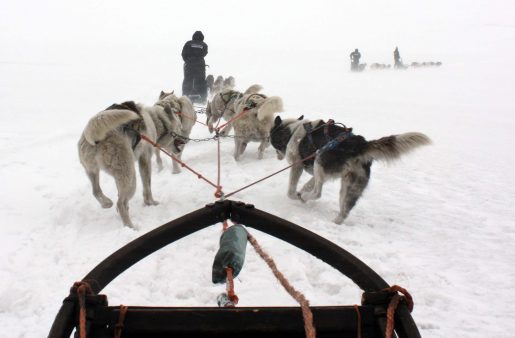Arctic Triumph: Northern Innovation and Persistence
18 January 2019
By Nikolas Sellheim, Yuliya V. Zaika, and Ilan Kelman.
Think about how many times you have come across the sentence “The Arctic is changing”. Indeed, as it has always been doing, the Arctic is changing with the changes today being particularly rapid, socially and environmentally—and their interactions. With the changes in the Arctic, come changes for the whole world. After all, the Arctic is not an isolated region, but is one of the key drivers of the Earth’s environment. As a consequence, when the Arctic changes, the globe changes and whatever affects the Arctic affects the rest of the world.
These changes are most typically depicted as being negative. Doomsdays play out the narrative of Arctic destruction and calamity. Narrating the Arctic as a region of disaster is not a recent phenomenon, but has accompanied it for centuries. Paired with notions of heroism, the North’s chill has claimed many lives while providing non-Arctic, emerging industrial states and regions with a wealth of resources. These, in turn, have marginalised the indigenous populations, exploited abundant Arctic resources, and created gloomy narratives on northern life and peoples.
Disaster, however, has never deterred engagement with the Arctic. To the contrary, disaster has spurred further European encroachment and, ultimately, contributed to more disaster, such as John Franklin’s expedition and Roald Amundsen’s death. Simultaneously, past disasters have led behavioural changes for the present; for instance, oil spill clean-up protocols, search-and-rescue capabilities, and warning systems for environmental hazards.
Despite all the positives, the avoidance of disaster, and the triumphs, a large body of Arctic literature deals primarily with the negativity related to the North. Our book Arctic Triumphbalances this contemporary narrative with a positive touch. Yes, the Arctic is changing with major negative consequences—but it is also changing to the good. As the chapters show, the negative developments of the past have also had positive effects on the contemporary Arctic which are to be celebrated, emulated, pushed forward, and improved.
This book approaches the challenges the Arctic has faced and is facing through a lens of opportunity. The chapter authors depict the Arctic as a region of enduring and thriving despite, possibly because of, challenges. This book treats the “Arctic of disasters” as an innovated narrative and asks how the “disaster pieces” of Arctic discourse interact with the ability of Arctic peoples, communities, and regions to counter disaster, adversity, and doom. While not neglecting the ongoing (potentially) disastrous processes in the north, this book calls for a paradigm shift from perceiving the “Arctic of disaster” to an “Arctic of triumph”—even when Arctic triumph and disaster intersect.
After all, each triumph in this book is somehow a response to a disaster. A precautionary triumph—a triumph that occurs before disaster strikes—is difficult to depict, a struggle frequently faced in garnering attention for successful disaster risk reduction. But as this book’s chapters show, all stories of success, with a triumph/disaster dialectic or continuum at their core, plant a seed for bigger, future developments. Indeed, a multifaceted Arctic strides forth and it is impossible to foresee how these different Arctics will develop.
The Arctic is a region marked by disaster in all its different facets, forms, shapes, contexts, and natures. Through this book, we wish to lift the curtain that has veiled our vision on the Arctic as a region of triumph. Even though disaster has carved its undeniable and unmistakable mark into the Arctic, each such disastrous change has brought about developments that have contributed to positive change. In this book, our authors tell a few of these stories. We firmly believe that a more positive approach towards the Arctic will benefit not only us as human beings, but also the world as a whole.
Arctic Triumph is available at https://www.springer.com/gp/book/9783030055226.
Nikolas Sellheim is a visiting postdoctoral researcher at the Helsinki Institute of Sustainability Science (HELSUS), University of Helsinki. His primary research deals with the role of local communities in international conservation law and he has intensively published on the seal hunt.
Yuliya Zaika is a researcher at the Khibiny research station of the Faculty of Geography, Lomonosov Moscow State University (Kirovsk, Murmansk region, Russia). Her main research interests are connected to the Arctic urban planning and territories, and sustainable development of local communities in the Russian Arctic.
Ilan Kelman is a Reader in Risk, Resilience and Global Health at University College London, England and a researcher at the University of Agder, Kristiansand, Norway. His overall research interest is linking disasters and health, including integrating climate change into both topics.
- Impressions from our qualitative expert interviews on changing political priorities in the Arctic
- From ice to inspiration: A glimpse into the Arctic Circle Assembly
- Seasonal Geopolitics of the North Pole
- The Polaris expedition and the problem of bias in Arctic exploration history
- Beaches, bugs and plastic in Arctic Canada